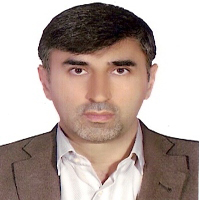Developing an Agent- based simulation system in rescue operation
Author(s):
Article Type:
Research/Original Article (دارای رتبه معتبر)
Abstract:
Introduction
Disasters such as earthquakes always been a serious threat to human life in urban environments.Peoples has always sought to reduce the financial and human damage is caused by such disasters.
Large scale earthquakes and rapid changes in the environment makes the people unable to deliver the optimal solution to save lives and minimize damage.The earthquake has destroyed streets, roads and other infrastructures, alsomakes fire. Fires which is started by earthquake destroys homes in the city.During different period of time, earthquake damage on Iranian society in social and economic fields is clear, therefore, dealing with the crisis in the form of a proper management and optimization is absolutely necessary.Always complicates access to the earthquake-stricken areas, is along with the difficulty of the rescue operation.Management structures can only overcome the prevailing political situation in these difficult circumstances that the acceptable level of cohesion and flexibility are paramount.The importance of intelligent systems that can help rescue the human species that kills more people will be saved, is clear.
Materials and Methods
Agent-based modeling (ABM) is a new approach to development of simulation tools for complex phenomena in different areas such as natural disasters, biological studies, and with earthquake rescue. This paper presents a simulation system for the search and rescue (SAR) operation using Geospatial Information System (GIS), multi-agent systems (MAS) and the concept of integration for dynamic task allocation.Due to the flexibility of the agent based systems and the possibility of combining space and time, MASs can be a powerful tool in the simulation of rescue operations and strategic management issues. These systems can simulate all factors in earthquakes such as people, robots, helicopters, and vehicles to communicate and cooperate with each other due to solve the distributed problems.
In several studies, the high capability of using agent-based modeling structures to model human behavior as a part of an environment due to coordinate the rescue operation is referenced.The use of the base agent-based modeling and the possibility of combining flexibility with respect to location and time of the simulation can be a powerful tool in their search and rescue operations and strategic management issues.There are many reasons to use multi-agent systems to manage the crisis.Multi agents systems makes it possible to simulate the demolition of buildings and homes, the fire, firefighters activities, urban infrastructure damage, injured and displaced, and the victims, so they can find optimal strategies for search and rescue operations in large-scale accidents and crisis management performance multi-factor systems used.Multi-agent systems are allowed to participate inenvironment to cooperate or compete environment. Multi-agent systems are targeted complex systems with an emphasis on the interaction between agents. They can breakcomplex systems into sub-systems and other simple factors in environments. Various studies have stated that MASspossess high potentials for natural disasters management, from rescue operation to understandthe position of injured persons.
The main objective of this paper is to use multi-agent systems to simulation activities, increasing efficiency of rescue groups. This research tries to offer a way to find relationship between the number of search agents and rescue agents with regard to the maximum number of surviving people. This system can be used for management and decision-making before the earthquake.
Results and Discussion
Evaluation of developed system, took place in part of Region 3 in Tehran. The proposed system consists of three parts: 1) modeling environment and working groups with the use of GIS, analysis of the search operation by multi-factor system and visualization of results. Therefore, environment has been modeled using spatial data and the amount of space that each agent must search, is assigned for each agent. 2) Then, each of the search agents use ant colony algorithm for sequencing tasks in order to find a near-optimal solutions to look for environment. 3) The injuries that are found by search agents, are assigned to rescue agents by contract net protocol and operation is executed.Conclusion
Result of this research is showed in the form of a diagram which highlights relationship between the number of search agents and release agents (according to the number of survivors, and when coordination is done). The result offers a model in finding the number of people needed for rescue operations in different parts of the city. Language:
Persian
Published:
Journal of of Geographical Data (SEPEHR), Volume:26 Issue: 103, 2017
Pages:
59 to 70
magiran.com/p1772447
دانلود و مطالعه متن این مقاله با یکی از روشهای زیر امکان پذیر است:
اشتراک شخصی
با عضویت و پرداخت آنلاین حق اشتراک یکساله به مبلغ 1,390,000ريال میتوانید 70 عنوان مطلب دانلود کنید!
اشتراک سازمانی
به کتابخانه دانشگاه یا محل کار خود پیشنهاد کنید تا اشتراک سازمانی این پایگاه را برای دسترسی نامحدود همه کاربران به متن مطالب تهیه نمایند!
توجه!
- حق عضویت دریافتی صرف حمایت از نشریات عضو و نگهداری، تکمیل و توسعه مگیران میشود.
- پرداخت حق اشتراک و دانلود مقالات اجازه بازنشر آن در سایر رسانههای چاپی و دیجیتال را به کاربر نمیدهد.
In order to view content subscription is required
Personal subscription
Subscribe magiran.com for 70 € euros via PayPal and download 70 articles during a year.
Organization subscription
Please contact us to subscribe your university or library for unlimited access!


